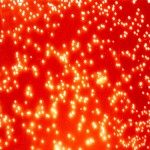Link to Pubmed [PMID] – 35224624
Link to DOI – dkac04110.1093/jac/dkac041
J Antimicrob Chemother 2022 Feb; ():
WHO considers ESBL- and carbapenemase-producing Klebsiella pneumoniae a major global concern. In animals, ESBL- and carbapenemase-producing K. pneumoniae of human-related ST11, ST15 and ST307 have been reported, but not in the context of large WGS-based One Health investigations.To perform comparative phylogenomics on a large collection of multidrug-resistant (MDR) K. pneumoniae recovered from diseased companion animals and humans.MDR K. pneumoniae (n = 105) recovered from companion animals in France during 2010-18 were phenotypically characterized. All isolates were whole-genome sequenced using the NovaSeq technology and phylogenomic analysis across animal and human K. pneumoniae was performed using appropriate pipelines.bla CTX-M-15, blaDHA-1 and blaOXA-48 were strongly associated with IncFIIk, IncR and IncL plasmids, respectively. When compared with human K. pneumoniae genomes, four groups of closely related French human and animal isolates belonging to ST11, ST15 and ST307 were detected, suggesting the circulation of clones between the human and animal sectors at country level. A large cluster of 31 ST11-KL105 animal isolates from France and Switzerland suggested it corresponds to a sub-lineage that is particularly well-adapted to the animal host.This study demonstrates the spread of blaCTX-M-15-carrying ST15 and ST307, and blaDHA-1-carrying ST11 K. pneumoniae clones in animal populations. ST11 was the main vector of blaOXA-48/IncL, despite the absence of carbapenem use in French animals. Comparative phylogenomics suggests cross-transmission of K. pneumoniae sub-lineages more prone than others to colonize/infect the animal host. Our data also evidenced the emergence of convergent hypervirulent and MDR K. pneumoniae in animals.

